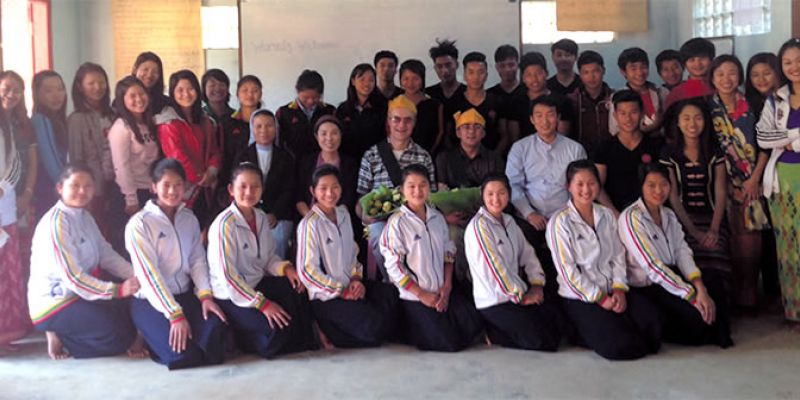
The closing of the Columban centennial in Myanmar was held in Myitkyina where Columbans worked for decades until 1979 before being expelled by the military government. Thousands of Kachin people came mostly on foot for the closing Mass [which lasted almost three hours with liturgical dance], for their traditional Manaw dance [two hours] and for the open air concert at night. They slept in tents around the grounds. The faith of the Kachin people – the children, teenagers and elderly is alive, inspiring and contagious. It is awesome, and they tell us that it is due to the Columban priests and Sisters who worked alongside them for decades. It is remarkable that many children and teenagers have Columban as their baptismal name even today.
In Mandalay where I have a Higher Education Center we have students from all the seven major ethnic groups. When they return at the beginning of each year they come bouncing into my office with smiling eyes and cheerful hearts. When the Kachins return they too bounce in with cheerful hearts but what makes them different from the other ethnic groups is that they always present me with some of the produce from their land, oranges, grapefruit, etc.
Archbishop Paul Grawng was trained by the Coumban,s and he was the first Kachin priest and bishop, replacing Columban bishop John Howe when he returned to Ireland. I have asked Bishop Grawng why the Kachins, despite a civil war, exploitation and poverty, are so generous and his reply was, "The Columbans were always hospitable and generous and some of that has rubbed off on us Kachins." If this is true it is another tribute to those great Columbans, men and women, who planted the seeds of faith in the Kachin land.
It is up to us now on our missionary journey to keep watering those seeds and accompanying the Kachin people in their struggles for justice and their God given dignity. It is a privilege for us to be back in Myanmar with a people who are "for others, with others."


 The Columbans are a society of missionaries, including priests and lay people, who minister to people of various cultures as a way of witnessing to the universal love of God.
The Columbans are a society of missionaries, including priests and lay people, who minister to people of various cultures as a way of witnessing to the universal love of God.